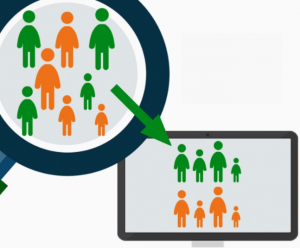NEED
Propensity score matching is a statistical technique commonly used in observational studies to estimate treatment effects. In an observational study, researchers cannot control which patients receive treatment and which do not. Therefore, they must use statistical methods to adjust for potential confounding variables and account for the non-randomized assignment of treatments. Propensity score matching is one such method that aims to reduce bias and estimate the treatment effect in a non-randomized setting.
What is Propensity Score Matching?
Propensity score matching involves creating a propensity score, which is the probability of receiving the treatment based on observed covariates. The propensity score is calculated for each patient, and patients who receive the treatment are matched with patients who do not receive the treatment based on their propensity score. Matching can be done with replacement (i.e., one treated patient can be matched with multiple untreated patients) or without replacement (i.e., one treated patient is matched with only one untreated patient).
After matching, the treatment effect is estimated by comparing the outcome variable between the matched treated and untreated patients. This method is useful because it creates a pseudo-randomized control group, which reduces the bias introduced by confounding variables. Propensity score matching can be used to estimate the average treatment effect (ATE), the treatment effect for specific subgroups, or the treatment effect on the treated (ATT).
Benefits of Propensity Score Matching
One of the main benefits of propensity score matching is that it can reduce the bias and confounding variables in observational studies. It allows researchers to create a pseudo-randomized control group, which can help to estimate the treatment effect more accurately. Propensity score matching is also useful when the sample size is limited, as it can reduce the variability of the treatment effect estimate.
Another benefit of propensity score matching is that it can be used to estimate the treatment effect for specific subgroups. Researchers can match patients based on their propensity score and other variables of interest, such as age, gender, or comorbidities. This can help to identify the subgroups of patients who are most likely to benefit from the treatment.
Limitations of Propensity Score Matching
Despite its benefits, propensity score matching has some limitations. One limitation is that it relies on the assumption that all relevant covariates have been measured and included in the model. If there are unmeasured or unobserved covariates that affect the treatment assignment and the outcome variable, the estimate of the treatment effect may be biased. In addition, the quality of the matching depends on the accuracy of the propensity score model. If the propensity score model is misspecified, the matching may not be optimal, and the estimate of the treatment effect may be biased.
Conclusion
Propensity score matching is a powerful tool for estimating treatment effects in observational studies. It allows researchers to create a pseudo-randomized control group and reduce the bias introduced by confounding variables. However, it is important to carefully consider the assumptions and limitations of the method and to use appropriate methods to estimate the treatment effect accurately and reliably. Propensity score matching is a useful tool in the toolkit of researchers studying treatment effects in observational studies.



